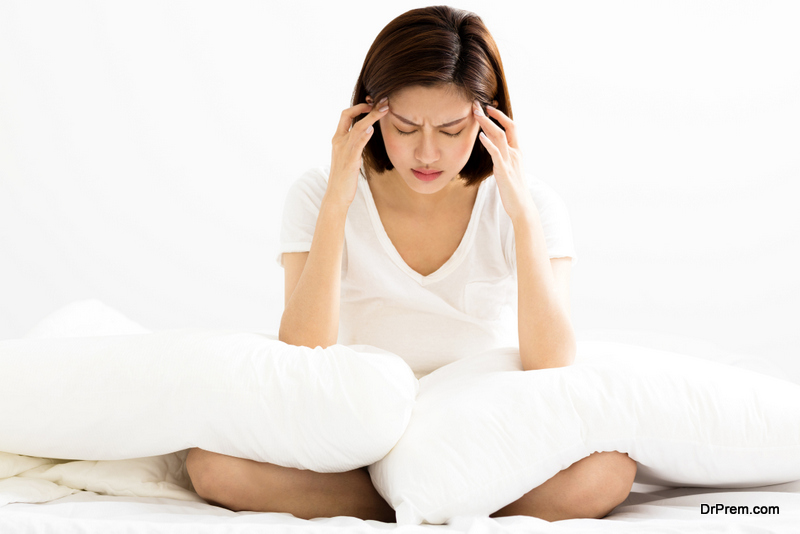Over 38 million people suffering from migraine headaches. Of those 38 million people, approximately 3 million suffer from chronic migraines. Migraine headaches can vary in intensity and frequency. Some people simply need over the counter medication to relieve symptoms while for others, migraines can be debilitating. But what causes these intense headaches? What are the symptoms and how can you find relief? Read on to discover all of these answers and more.
What is a Migraine Headache?  A migraine headache, like most others, is accompanied by a varying degree of pain in the head and neck area. Migraines are often paired with sensitivity to light and sound, as well as nausea, vomiting, and impaired vision for some people. Sufferers sometimes feel pain, throbbing, and discomfort on one side of the head more than the other. The pain can be so severe that it lasts for hours or even days for some unlucky individuals. The patients are often forced to skip work, school, or other activities outside the house and must rest in a dark, quiet room until the pain subsides.
A migraine headache, like most others, is accompanied by a varying degree of pain in the head and neck area. Migraines are often paired with sensitivity to light and sound, as well as nausea, vomiting, and impaired vision for some people. Sufferers sometimes feel pain, throbbing, and discomfort on one side of the head more than the other. The pain can be so severe that it lasts for hours or even days for some unlucky individuals. The patients are often forced to skip work, school, or other activities outside the house and must rest in a dark, quiet room until the pain subsides.
What Causes Migraines?
Migraine headaches are caused by abnormal brain activity. They generally affect individuals between the ages of 10 and 45. Migraine attacks are believed to begin in the brain, where they impact different chemicals in the body and nerve pathways. This change then affects blood flow to the brain and nearby tissues, causing pain and throbbing.
Different Types of Migraines 
Not all migraines are the same and therefore, affect people differently. The two main types of migraines are ones with aura and ocular migraines. Both impact a person’s vision but the biggest difference is that ocular migraines only affect one side of the person’s eyes, whereas aura affects both. Vision impairment comes in different forms but the most common symptoms include flashes of light, blurred vision, and floating spots. These vision issues are often what elicit feelings of nausea that result in vomiting.
Treatment Options
There are a variety of ways to treat migraine headaches, both migraines with aura and ocular migraines. Not all treatments work for all patients and some individuals require a combination of methods. Here are a few of the many ways to relieve migraine pain and discomfort.
Medication  There are several medication options for migraine sufferers. Over the counter pain relievers can help for mild headaches but for chronic migraines, a prescription is often needed. Triptans are another popular form of medication used to treat migraines. Triptans are a group of tryptamine-based drugs that are used to treat specific types of headaches including migraine and cluster headaches. Some examples of triptans used to treat migraines are Axert, Frova, Zomig, and Imitrex. Your physician can help determine which medication will work best to treat your current migraine symptoms.
There are several medication options for migraine sufferers. Over the counter pain relievers can help for mild headaches but for chronic migraines, a prescription is often needed. Triptans are another popular form of medication used to treat migraines. Triptans are a group of tryptamine-based drugs that are used to treat specific types of headaches including migraine and cluster headaches. Some examples of triptans used to treat migraines are Axert, Frova, Zomig, and Imitrex. Your physician can help determine which medication will work best to treat your current migraine symptoms.
Self-Care
There are a long list of home remedies and self-care options for treating migraines. Once you learn your body’s triggers and how you react to the onset of a migraine headache, you can take the right steps to treat it quickly and effectively. Things like applying ice to your forehead or neck can help reduce the blood blow to your head and quell some of the throbbing sensations associated with migraines. Some migraine sufferers report that caffeine helps offer relief. Some patients will retreat to a dark, quiet room to help reduce sensitivity to light and sound.
Alternative Methods  There are some therapy options for treating migraines that have proven quite helpful. Non-traditional methods like acupuncture, massage, and behavioral therapy. The use of some herbs, vitamins, and minerals have also proven to help ward off migraine headaches and reduce their intensity and frequency. CBD can also offer migraine relief among other health benefits. Discover more about this herb which is growing in popularity for treating countless ailments.
There are some therapy options for treating migraines that have proven quite helpful. Non-traditional methods like acupuncture, massage, and behavioral therapy. The use of some herbs, vitamins, and minerals have also proven to help ward off migraine headaches and reduce their intensity and frequency. CBD can also offer migraine relief among other health benefits. Discover more about this herb which is growing in popularity for treating countless ailments.
Preventative Methods
While there are a long list of treatment options for migraines, there are also several ways to prevent their onset. While there is no guarantee that trying these methods will stop your migraines from occurring, but they may help reduce their frequency and intensity.
Exercise
 It’s not recommended that you try and perform any sort of intense exercise while you’re suffering from a migraine, but regular exercise, especially forms that increase circulation and blood flow, are said to reduce the occurence of migraines in some people. Yoga is the perfect example of this form of exercise. Certain positions like downward facing dog are especially helpful at increasing blood flow to the brain and improving circulation. Other positions can help target the stress and tension you hold in your body and potentially ward off future migraines.
It’s not recommended that you try and perform any sort of intense exercise while you’re suffering from a migraine, but regular exercise, especially forms that increase circulation and blood flow, are said to reduce the occurence of migraines in some people. Yoga is the perfect example of this form of exercise. Certain positions like downward facing dog are especially helpful at increasing blood flow to the brain and improving circulation. Other positions can help target the stress and tension you hold in your body and potentially ward off future migraines.
Diet – Magnesium, vitamin B12 (fish, milk, cheese)
Incorporating certain foods into your diet may also help reduce migraine occurrence. Ingesting magnesium may actually prevent migraines up to 40% in some patients. You can easily take a magnesium supplement or start eating more green leafy vegetables, certain fruits, nuts, seeds, and certain seafood. Vitamin B12, which is also found in some fish, as well as milk, cheese, and other dairy products, has also been associated with a reduction in migraine frequency for chronic sufferers. Something as simple as switching up your diet can actually ward off future headaches. And you’ll feel the health benefits associated with eating more vitamins and minerals as well.
Quality Sleep  You already know that sleep is important for maintaining a healthy weight, staying focused, feeling energized, and supporting a positive, productive mindset. But getting quality sleep is also associated with less migraines. On the flipside, too much sleep can also act as a trigger for migraines. It’s important to find a happy medium where migraines stay at bay. This can also help increase your threshold for pain, making your migraines less intense. Try adopting a steady sleep routine where you go to bed and wake at the same time each day.
You already know that sleep is important for maintaining a healthy weight, staying focused, feeling energized, and supporting a positive, productive mindset. But getting quality sleep is also associated with less migraines. On the flipside, too much sleep can also act as a trigger for migraines. It’s important to find a happy medium where migraines stay at bay. This can also help increase your threshold for pain, making your migraines less intense. Try adopting a steady sleep routine where you go to bed and wake at the same time each day.
Know Your Triggers – some foods (aged cheese, red wine), light, odors
Lastly, knowing and understand your migraine triggers is the best way to prevent them. Some people experience an extreme sensitivity to certain odors or foods. If you know that drinking red wine triggers a migraine, avoid it or only consume it in very small doses. Other people’s migraines are triggered by light or sound. Once you better understand what prompts your migraines, you can make efforts to avoid these triggers.
For migraine sufferers, the pain and inability to function is a very real problem. Migraine headaches can interfere with everyday life. If you’re one of these people, start learning more about what causes your migraines and which preventative and treatment options work best. Once you get a handle on this, you can ward off these painful headaches and start living a full, happier life.
Article Submitted By Community Writer




